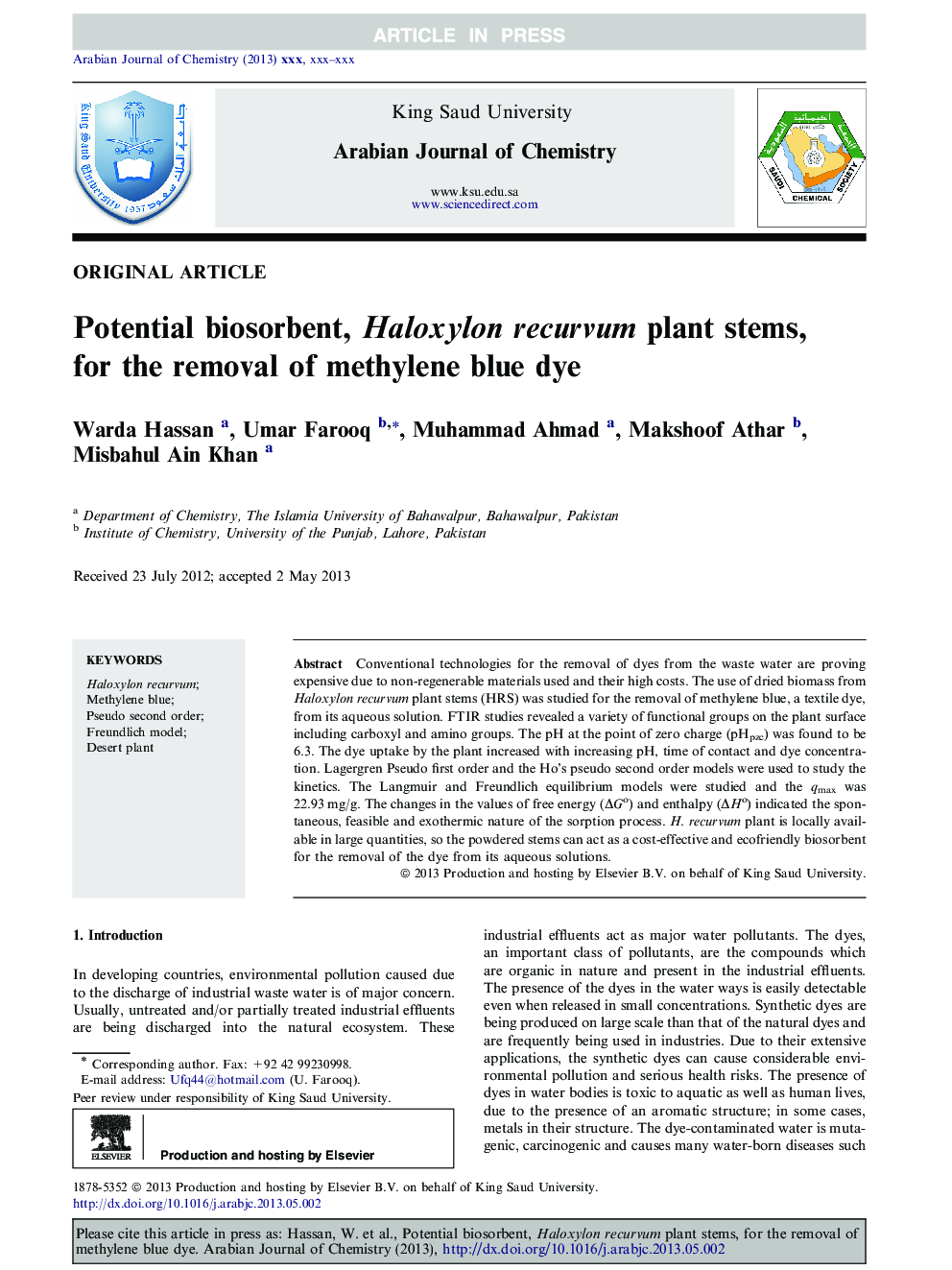| Article ID | Journal | Published Year | Pages | File Type |
|---|---|---|---|---|
| 5142330 | Arabian Journal of Chemistry | 2017 | 11 Pages |
Abstract
Conventional technologies for the removal of dyes from the waste water are proving expensive due to non-regenerable materials used and their high costs. The use of dried biomass from Haloxylon recurvum plant stems (HRS) was studied for the removal of methylene blue, a textile dye, from its aqueous solution. FTIR studies revealed a variety of functional groups on the plant surface including carboxyl and amino groups. The pH at the point of zero charge (pHpzc) was found to be 6.3. The dye uptake by the plant increased with increasing pH, time of contact and dye concentration. Lagergren Pseudo first order and the Ho's pseudo second order models were used to study the kinetics. The Langmuir and Freundlich equilibrium models were studied and the qmax was 22.93Â mg/g. The changes in the values of free energy (ÎGo) and enthalpy (ÎHo) indicated the spontaneous, feasible and exothermic nature of the sorption process. H. recurvum plant is locally available in large quantities, so the powdered stems can act as a cost-effective and ecofriendly biosorbent for the removal of the dye from its aqueous solutions.
Related Topics
Physical Sciences and Engineering
Chemistry
Chemistry (General)
Authors
Warda Hassan, Umar Farooq, Muhammad Ahmad, Makshoof Athar, Misbahul Ain Khan,
